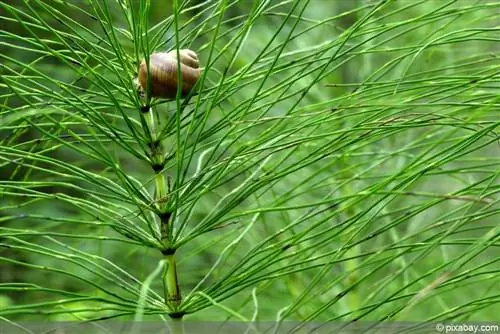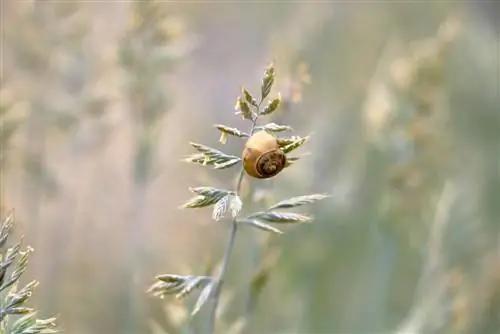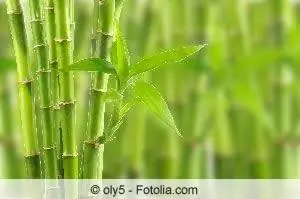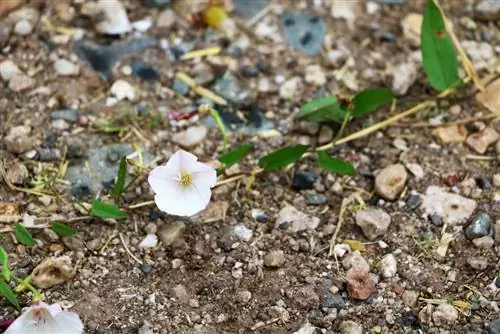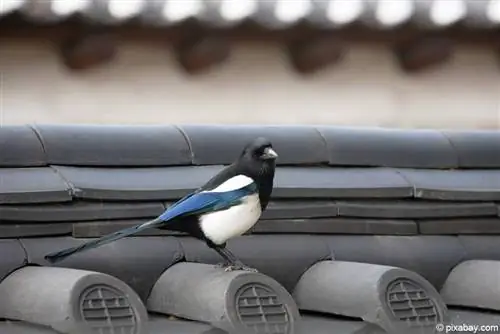- Author admin [email protected].
- Public 2023-12-17 03:39.
- Last modified 2025-01-24 12:45.
The field horsetail has the botanical name Equisetum arvense and is also colloquially known as horsetail. The weed is feared by every gardener because it spreads quickly and is difficult to remove permanently. Since chemical agents only have a limited effect on the plant, traditional manual work is often required. However, there are certain methods to curb the spread of the unwanted plant.
General
The field horsetail is an indicator plant, which means that it provides an indication of certain conditions in the soil. It shows soil compaction, too few nutrients and a lack of humus. It also indicates accumulated moisture. It is advisable to combat field horsetail as the weed competes with ornamental and useful plants in the garden.
- Perennial and perennial weeds
- Reaches heights of 10 to 50 cm
- Spreads from March to October
- Prefers fields, loamy-moist meadow edges, embankments and ditches
- Robbes light, nutrients, space and water from neighboring plants
Spread in the garden

The field horsetail can reproduce in two methods, which is why it spreads extremely quickly in the home garden. During its flowering period, the plant does not produce seeds, but rather spores. In addition, the weed sprouts underground runners on which rhizomes grow. Digging up the weeds only temporarily stops the spread, as new plants can still grow from even the smallest parts of the roots. For sustainable control, the entire soil would have to be replaced.
- Spores spread quickly through the air with the wind
- In contrast to seeds, the flight of spores can hardly be contained
- Roots grow up to two meters deep
- Runners even grow horizontally several meters long
- Weeds easily overcome stone surfaces
- Roots grow even underneath houses without a basement
Causes
In order to successfully combat field horsetail, the basis for its spread must be eliminated. The weed prefers waterlogging and compacted soils with firm properties. These conditions favor its growth and further spread, displacing other plants. The better the irrigation and rain water can drain away, the less waterlogging occurs. As a result, the field horsetail is deprived of its livelihood, it feels significantly disturbed and only spreads sparsely. It also promotes the growth of other and welcome plants. In this way, the areas in the garden are occupied before the weeds can spread again. However, combating it is very difficult if the property has a very high groundwater level and there is constant waterlogging.
- Permanently prevent waterlogging
- Create drainage in the ground
- Prefers loamy to clayey soils
- Work sand, compost and peat into the soil
- Frequently loosen the soil mechanically
- Always monitor growth in the garden
- Remove spore shoots early
Digging

If you want to combat horsetail sustainably, you must have good endurance. Digging up the soil makes it difficult for horsetail to spread further. The plant does not like soil that is too loose, so if you repeatedly plow it, you are depriving it of an important source of life. In addition, the plant and its rhizomes are severely damaged, a circumstance that the horsetail must first compensate for. However, because the weeds spread over large areas, they cannot be completely removed with a simple spade; professional tools are required for this.
- Forms very strong rhizome networks
- Reach to a few meters deep
- Remove all root pieces as thoroughly as possible
- Digging involves a lot of work
- Powerful equipment for digging is ideal
- The deep chisel is very suitable
- A temporary but not a permanent solution
Disposal
If the field horsetail has been dug up, the plant parts must be disposed of correctly, otherwise an undesirable spread will occur. If spores have already formed, the horsetail should not be moved or shaken unnecessarily. Otherwise it will spread quickly and infect the garden again.
- Remove roots and above-ground plant parts as quickly as possible
- Never dispose of plant residues in the compost
- Place plant parts with spores immediately in a plastic bag
- Always dispose of field horsetail in the trash can immediately
Vinegar Essence
A traditional tip for combating it is to spray the field horsetail with pure vinegar essence. The plant feels disturbed by this and further spreading is temporarily prevented. For a more intensive effect, you can also pour it completely over the weed, but then extremely large amounts of vinegar essence are required. While this method does not use any harmful chemicals, the use of vinegar alters the soil and can harm other plants that are desirable in the garden. In addition, this method only allows you to reach the superficial parts of the plant and does not damage the rhizome network.
- Vinegar essence is commercially available
- Use pure essence, do not dilute
- Fill liquid into pump sprayer
- Spray weeds generously with it
- Vinegar essence changes the pH value of the soil
- Too much vinegar disrupts many useful plants
lime the floor
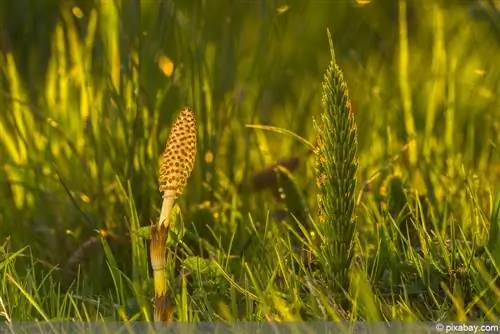
Since field horsetail prefers an acidic pH value in the soil, this can be changed positively by using lime. In this way, weed growth is effectively and sustainably curbed. In this way, the plant's livelihood is permanently deprived and the population declines naturally. However, this process takes time and the gardener must be patient. It should be noted, however, that many useful and desirable plants cannot tolerate excessively high lime levels in the soil.
- Plant avoids neutral and alkaline soils
- Fertilize soil with lime
- Lime reacts with the acids present in the earth
- The pH value then changes from acidic to basic
- Method only becomes effective after several months to a few years
- Never use vinegar essence and lime at the same time
Fertilize soil
Field horsetail can also be eliminated by regularly applying fertilizer, as it cannot really thrive on well-fertilized soil. For this reason, the weed has disappeared in many places in agriculture, where it had often spread as a marginal plant on the field. With a little patience, the field horsetail will gradually disappear in this way.
- Measure is easy to implement
- Fertilize regularly, but not excessively
- Use compost or manure
- Alternatively, the use of artificial fertilizer is possible
- Make sure the dosage is normal
Chemical antidotes
The field horsetail has very robust properties and is extremely resistant to the use of chemical weed killers. These usually have a much greater effect than conventional home remedies, but not with horsetail. Therefore, to date there is no known effective agent that is approved for use in the garden and can permanently eliminate weeds. In addition, the chemical agents only cause the above-ground parts of the plant to die; the agents do not reach the underground rhizome networks.
- Weed killers only briefly slow down growth
- Maybe get rid of the weeds in the short term
- The field horsetail usually comes back next year
- It is better not to use to protect the environment
- Also harmful to human he alth
Useful benefits
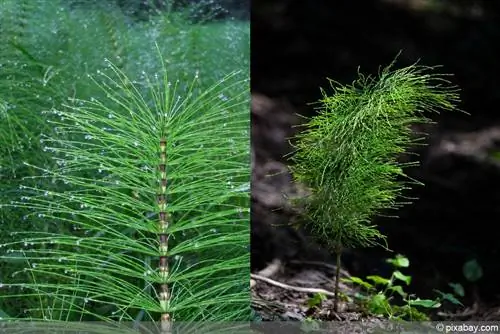
The field horsetail not only has disadvantageous properties, but it also has its good sides, because the plant contains a lot of silica. For this reason, the unwanted herb can be used as plant protection and a potent broth against fungal diseases can be prepared from it. Instead of having to laboriously dispose of the horsetail, you can use it for a good purpose. As a preventive measure, plants susceptible to fungi can be treated, especially roses. In addition, this increases resistance to other rose diseases such as powdery mildew, black mold and rose rust.
- Add 1, 5 kg of herb to 10 liters of water
- First soak in it for 24 hours
- Then simmer over low heat for about 30 minutes
- Then cool and let the broth run through a sieve
- Dilute with water in a ratio of one to five
- Spray plants affected by fungi with this weekly
- Repeat the process from leaf emergence until early summer

